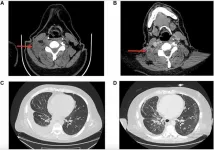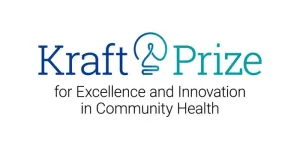(Press-News.org) ROCHESTER, Minnesota — Mayo Clinic researchers have pioneered an artificial intelligence (AI) tool, called OmicsFootPrint, that helps convert vast amounts of complex biological data into two-dimensional circular images. The details of the tool are published in a study in Nucleic Acids Research.
Omics is the study of genes, proteins and other molecular data to help uncover how the body functions and how diseases develop. By mapping this data, the OmicsFootPrint may provide clinicians and researchers with a new way to visualize patterns in diseases, such as cancer and neurological disorders, that can help guide personalized therapies. It may also provide an intuitive way to explore disease mechanisms and interactions.
"Data becomes most powerful when you can see the story it's telling," says lead author Krishna Rani Kalari, Ph.D., associate professor of biomedical informatics at Mayo Clinic's Center for Individualized Medicine. "The OmicsFootPrint could open doors to discoveries we haven't been able to achieve before."
Genes act as the body’s instruction manual, while proteins carry out those instructions to keep cells functioning. Sometimes, changes in these instructions — called mutations — can disrupt this process and lead to disease. The OmicsFootPrint helps make sense of these complexities by turning data — such as gene activity, mutations and protein levels — into colorful, circular maps that offer a clearer picture of what’s happening in the body.
In their study, the researchers used the OmicsFootPrint to analyze drug response and cancer multi-omics data. The tool distinguished between two types of breast cancer — lobular and ductal carcinomas — with an average accuracy of 87%. When applied to lung cancer, it demonstrated over 95% accuracy in identifying two types: adenocarcinoma and squamous cell carcinoma.
The study showed that combining several types of molecular data produces more accurate results than using just one type of data.
The OmicsFootPrint also shows potential in providing meaningful results even with limited datasets. It uses advanced AI methods that learn from existing data and apply that knowledge to new scenarios — a process known as transfer learning. In one example, it helped researchers achieve over 95% accuracy in identifying lung cancer subtypes using less than 20% of the typical data volume.
"This approach could be beneficial for research even with small sample size or clinical studies," Dr. Kalari says.
To enhance its accuracy and insights, the OmicsFootPrint framework also uses an advanced method called SHAP (SHapley Additive exPlanations). SHAP highlights the most important markers, genes or proteins that influence the results to help researchers understand the factors driving disease patterns.
Beyond research, the OmicsFootPrint is designed for clinical use. It compresses large biological datasets into compact images that require just 2% of the original storage space. This could make the images easy to integrate into electronic medical records to guide patient care in the future.
The research team plans to expand the OmicsFootPrint to study other diseases, including neurological diseases and other complex disorders. They are also working on updates to make the tool even more accurate and flexible, including the ability to find new disease markers and drug targets.
See the study for a complete list of authors, disclosures and funding.
###
About Mayo Clinic
Mayo Clinic is a nonprofit organization committed to innovation in clinical practice, education and research, and providing compassion, expertise and answers to everyone who needs healing. Visit the Mayo Clinic News Network for additional Mayo Clinic news.
Media contact:
Susan Murphy, Mayo Clinic Communications, newsbureau@mayo.edu END
OmicsFootPrint: Mayo Clinic’s AI tool offers a new way to visualize disease
2025-02-06
ELSE PRESS RELEASES FROM THIS DATE:
New genetic mutation linked to drug resistance in non-small cell lung cancer patient
2025-02-06
“Here we present a case of a patient with stage IV CD-74-ROS1 fusion NSCLC discovered initially with RNA next generation sequencing (NGS) who acquired resistance to lorlatinib after 6 months on therapy through a novel RUFY1-RET fusion, detected only through RNA NGS.”
BUFFALO, NY - February 6, 2025 – A new case report was published in Volume 16 of Oncotarget on February 5, 2025, titled “Acquired RUFY1-RET rearrangement as a mechanism of resistance to lorlatinib in a patient with CD74-ROS1 rearranged non-small cell lung cancer: A case report."
In this case report, Jenny L. ...
Single-photon LiDAR delivers detailed 3D images at distances up to 1 kilometer
2025-02-06
WASHINGTON — Researchers have designed a single-photon time-of-flight LiDAR system that can acquire a high-resolution 3D image of an object or scene up to 1 kilometer away. The new system could help enhance security, monitoring, and remote sensing by enabling detailed imaging even in challenging environmental conditions or when objects are obscured by foliage or camouflage netting.
“Our system uses a single-photon detector approximately twice as efficient as detectors deployed in similar LiDAR systems ...
Fear of breast cancer recurrence: Impact and coping with being in a dark place
2025-02-06
INDIANAPOLIS – Breast cancer is the world’s most prevalent cancer. Although earlier detection and targeted treatment have resulted in high survival rates, many breast cancer survivors experience fear of cancer recurrence. For some survivors this fear is occasional, for others it is persistent and often debilitating.
A new study of breast cancer survivors has found this psychosocial challenge impacts almost every important domain of their lives – the emotional, behavioral, cognitive, relational and professional. A larger number of domains was affected, ...
Korea University researchers analysis of income-related disparities in mortality among young adults with diabetes
2025-02-06
Korea University Researchers Analysis of Income-Related Disparities in Mortality Among Young Adults with Diabetes
Type 2 diabetics (T2D) under 40 years of age with low income have a threefold higher risk of mortality
Young people with T2D are more affected by income than elderly people with T2D
The research team of Professor Sin Gon Kim and Professor Nam Hoon Kim of department of internal medicine (Endocrinology and Metabolism) of Korea University Anam Hospital, and Professor Ji Yoon Kim of Samsung Medical Center confirmed that young adults with T2D with low income have 3 times higher mortality ...
Study shows link between income inequality and health and education disparities may drive support for economic reform
2025-02-06
New research forthcoming in Social Psychological and Personality Science shows that when people understand how income inequality creates disparities in healthcare and education access, they become more likely to support policies addressing economic inequality.
Across four studies, the research shows that highlighting connections between income gaps and inequalities in health and education access decreases acceptance of economic disparities and increase support for redistributive actions.
"Research has shown that people often tolerate income inequality. However, our study shows that when people perceive ...
HonorHealth Research Institute’s Chief Medical Officer is recognized by the world’s leading organization for cancer doctors
2025-02-06
SCOTTSDALE, Ariz. — Feb. 6, 2025 — Michael S. Gordon, M.D., Chief Medical Officer of HonorHealth Research Institute, today was named a Fellow of the American Society of Clinical Oncology (FASCO), the world’s leading professional organization for physicians and oncology professionals caring for people with cancer.
“The title of FASCO is a recognition bestowed upon ASCO members who have shown extraordinary dedication for their voluntary efforts that benefit the Society, the specialty of oncology, and most importantly, the patients whom we serve,” according to a letter ...
InsectNet technology identifies insects around the world and around the farm
2025-02-06
AMES, Iowa – A farmer notices an unfamiliar insect on a leaf.
Is this a pollinator? Or a pest? Good news at harvest time? Or bad? Need to be controlled? Or not?
That farmer can snap a picture, use a smartphone or computer to feed the photo into a web-based application called InsectNet and, with the help of machine learning technology, get back real-time information.
“The app identifies the insect and returns a prediction of its taxonomic classification and role in the ecosystem as a pest, predator, pollinator, parasitoid, decomposer, herbivore, indicator ...
Restoring predators, restoring ecosystems: Yellowstone wolves and other carnivores drive strong trophic cascade
2025-02-06
Restoring Predators, Restoring Ecosystems: Yellowstone Wolves and other Carnivores Drive Strong Trophic Cascade
Corvallis, OR — February 6, 2025 — A new study reveals the profound ecological effects of wolves and other large carnivores in Yellowstone National Park, showcasing the cascading effects predators can have on ecosystems. In Yellowstone, this involves wolves and other large carnivores, elk, and willows. The research, which utilized previously published data from 25 riparian (streamside) ...
Corn’s ancient ancestors are calling
2025-02-06
The domestication of maize is one of the greatest examples of humankind’s impact on evolution. Early farmers’ pre-industrial plant breeding choices turned corn from a nearly inedible crop into the major global food source it is today.
Now, Cold Spring Harbor Laboratory Professors Rob Martienssen and Thomas Gingeras are uncovering the genetics behind choices farmers made 9,000 years ago. They aim to better understand how evolution works and to help today’s farmers update corn so it can grow in harsh conditions. To ...
Mass General Brigham’s Kraft Center Announces the 2025 Kraft Prize for Excellence and Innovation in Community Health
2025-02-06
Boston, MA – Today, the Kraft Center for Community Health at Mass General Brigham announced the launch of the inaugural Kraft Prize for Excellence and Innovation in Community Health. This national prize seeks to honor a transformative organization, program or innovation that is making a measurable impact on health outcomes and has the potential to become a scalable model for addressing community health.
“We established The Kraft Center for Community Health with a mission to expand access to high-quality, cost-effective healthcare for medically underserved patients, families, and communities,” ...






